Low Level LASER Therapy
Table of Contents
Introduction
Low Level Laser Therapy (LLLT) is a non-invasive treatment that uses low-power lasers to stimulate cell repair and function. It has been shown to be effective for a wide range of conditions, including pain relief, wound healing, and hair loss. LLLT is safe and well-tolerated, and it can be used in conjunction with other treatments or as a stand-alone therapy.
Light Amplification by Stimulated Emission of Radiation is an abbreviation that is commonly referred to as LASER.
The light from a laser is coherent, collimated, and monochromatic. One tool that emits this kind of light is a laser.
Low-power and low-level lasers or light-emitting diodes (LEDs) are applied to the body’s surface as part of a phototherapy technique called low-level laser therapy (LLLT), sometimes referred to as cold laser therapy.
Typically, the therapy is used to treat a variety of ailments, including tissue damage, inflammation, and discomfort.
In low-level laser therapy (LLLT), non-thermal photons of light are emitted by lasers or LEDs and are absorbed by body cells, resulting in a cascade of physiological events.
LLLT is a single-wavelength non-invasive light therapy. It produces no sound, vibration, or heat. It is sometimes referred to as photobiology or biostimulation.
It is thought that LLLT has an impact on the fibroblasts, the cells that make up connective tissue, speeds up the healing process, and has anti-inflammatory properties.
These responses may aid in lowering pain and inflammation, encouraging tissue regeneration and repair, and enhancing blood flow. Certain physiotherapists utilize low-level laser therapy (LLLT) to treat different musculoskeletal conditions.
LLLT is a safe, painless, and non-invasive therapeutic alternative that is frequently utilized in sports medicine, physical therapy, and other medical contexts.
The therapy of musculoskeletal problems involves the use of lasers with a range of wavelengths, from 632 to 904 nm.
What is Low-Level Laser Therapy?
Low-level laser therapy (LLLT) is a minimally invasive medical method that stimulates cell function and facilitates healing by using low-level lasers or light-emitting diodes (LEDs). Numerous medical diseases, such as chronic pain, inflammation, wound healing, and musculoskeletal issues, are frequently treated with it.
Photobiomodulation is the mechanism by which the therapy stimulates the creation of cellular energy. Through interaction with the cells, the low-level laser or LED light sets off a series of chemical processes that encourage healing and regeneration.
Reduced pain, enhanced circulation, and quicker tissue regeneration are the results of this physiological reaction.
History of Low-Level Laser Therapy
In 1967, shortly after the creation of the first functional laser, Endre Mester of Semmelweis University in Budapest, Hungary, set out to investigate the possibility that laser radiation could induce cancer in mice.
This is how the history of LLLT began. He separated them into two groups, shaved their dorsal hair, and treated one group with a low-power ruby laser (694 nm).
To his amazement, the hair in the treated group regrows more quickly than the untreated group, and they do not develop cancer.
This was the first instance of “laser biostimulation” being shown.
Since then, youth and adolescents have experienced medical therapy using coherent light sources (lasers) or noncoherent light sources (light-emitting diodes, LEDs).
High-level laser treatment (LLLT), sometimes referred to as “cold laser,” “soft laser,” “biostimulation,” or “photobiomodulation,” is being used in several countries as a component of physical therapy.
As light therapy was originally employed as sun therapy by the Egyptians and then as UV therapy, for which Nils Finsen was awarded the Nobel Prize in 1904, it is actually one of the earliest forms of human therapy.
The next advancement in the technology of light therapy, which is currently used on hundreds of patients daily throughout the world, was the introduction of lasers and LEDs as light sources.
Mechanism of Action
Photobiomodulation
Because photobiomodulation (PBM) increases cell viability by triggering ATP synthesis in the mitochondria and cell membrane photoreceptors, it is used to expedite healing. PBM is triggered by laser and LED light. Osteoblast proliferation could be accelerated by this process, which could result in the development of novel treatment approaches that combine the benefits of laser irradiation with our knowledge of stem cell behaviour and targeted manipulation to hasten bone mending.
Photobiomodulation (PBM), a technique utilized in laser therapy, has not yet been incorporated into a standardized treatment plan for tissue repair and regeneration because of our poor understanding of how the process affects cells and tissues. Due to its foundation, another term is low-level laser light therapy (LLLT).
It is believed that photochemical effects, which are also present in plant photosynthesis, are how low-level laser treatment functions. The mitochondria, which are the centre of a cell’s metabolism and powerhouse, release toxic nitric oxide when sickness or damage stresses the cells within the tissue. Nitric oxide causes inflammation or cell death by displacing essential oxygen from cells.
When tissues absorb the light from low-level laser therapy (through a process that is still poorly understood), the nitric oxide is irreversibly split—that is, more oxygen is let back into the cells. This increases tissue oxygenation. This process restores mitochondrial activity and cell metabolism, enabling tissue health. Additionally, it is claimed that light absorption increases cell migration and proliferation (regeneration) and that it modifies the amounts of inflammatory mediators and growth factors.
What possible mechanism does Low-Level LASER treatment work on?
Non-thermal photobiological mechanisms are the mode of action of low-level laser treatment (LLLT). Chromophores absorb the laser light, which modifies pathophysiological processes. Healing processes are sped up by the photochemical effect, which promotes adenosine triphosphate (ATP) synthesis and activates mitochondria.
Another name for LLLT is photobiomodulation (PBM). It makes use of a pencil-shaped electromagnetic wave beam with a single frequency and set wavelength. LLLT is a treatment used by some physiotherapists for different musculoskeletal issues.
LLLT operates in a distinct manner from other medical laser treatments. It has no thermal or ablative mechanism. Rather, it makes use of a photochemical process.
Research using cells and animals has provided compelling evidence that red and infrared light-luminescence therapy (LLLT) has a dose-dependent anti-inflammatory impact.
How does Low-Level Laser Therapy work?
Low energy or photons are used in cold laser therapy to enter a sore tissue. Chemical reactions brought on by light help in the healing and growth of injured cells.
The doctor applies a portable gadget that resembles a flashlight straight to the affected area for approximately sixty seconds or 1 minute. A treatment session lasts up to 30 minutes.
When combined with other therapies for patients with lymphedema, such as lymphatic drainage massage, cold laser therapy may also be beneficial.
The Procedure:
Low-level laser therapy is relatively easy to do. There is no need for preparation for LLLT, and each treatment usually takes less than twenty minutes to finish.
The laser is used for the areas affected during the procedure. There should be no unpleasant vibrations or heat sensations for the patient during low-level laser therapy because it is painless.
You are free to resume your regular daily activities following your therapy. Following the treatment, there won’t be any downtime or recuperation time needed, and healing takes place quickly.
Does Low-Level Laser Therapy work?
Generally speaking, the use of low-position ray remedy for purposes of dwindling pain and inflammation and promoting mending has been seen as controversial in the last many times.
The nebulously of the exact process and biochemical medium of this treatment contributes to the contestation.
In addition, exploration has not always supported the effectiveness of low-position spotlights, but this may be related to the need for veritably specific parameters in the low-position ray treatment in order for the treatment to be effective.
There are studies that do find this treatment intervention to be more salutary than placebo, and it’s suggested that numerous parameters for illumination(wavelength, fluence, power viscosity, palpitation structure, and treatment timing) need to be met in order to achieve this positive outgrowth.
Low-position ray remedy(LLLT) is a non-invasive form of volition remedy approved by the United States Food and Drug Administration for a prescribed list of affections and medical conditions, including hair loss.
It’s also appertained to as cold ray remedy, photobiomodulation, soft ray biostimulation, and low-power ray remedy(LPLT).
In low-position ray remedy, low-intensity spotlights are administered on the affected area of the body in order to stimulate hair follicles, ameliorate mending, or aid in pain relief for the affected area.
The spotlights don’t beget any destruction or inflammation of the body’s Akins. They also don’t beget breakage of the skin or come in direct contact with internal Akins.
The spotlights correspond to red or near-infrared light that’s directed onto damaged cells. The Akins absorb the light, and the physiological response helps regenerate the cells.
Effects:
Adenosine triphosphate (ATP), a universal energy carrier that regulates cell processes that generate energy, is more readily available when exposed to laser light. This activation of cell metabolism promotes macrophage activity (immune system macrophages), speeds up phagocytosis (the ingestion of smaller cells), and increases the rate of division of various cell types (e.g., fibroblasts). In this approach, the immune system is fortified and wound healing is encouraged.
Moreover, LLLT can be utilized to reduce discomfort. Pain-inhibiting neurotransmitters like endorphins and serotonin are released by the laser. Furthermore, there is inhibition of the release of messenger compounds (e.g., prostaglandins) that might produce pain. Research has indicated that this dual action has the special ability to reduce pain.
Moreover, LLLT shows decongestant and anti-inflammatory properties. Serotonin and other neurotransmitters have antiedematous and antiphlogistic effects, respectively, against swelling and inflammation.
The following LT benefits are noteworthy for physiotherapy, and this tool can be used to supplement other therapies such as therapeutic exercise:
- Inflammation reduction: It might happen in a matter of hours or days.
- Pain reduce
- Accelerated tissue regeneration: LLLT promotes the growth of lymphocytes, keratinocytes, endothelial cells, and fibroblasts.
Indications of Low-Level LASER Therapy
Through the improved mending of injuries, cases are fit again more snappily and don’t suffer from the impairments over a longer period of time. However, there are no given side goods, If LLLT is used rightly. It’s veritably well tolerated and the health isn’t burdened.
Pain can generally be reduced with a low-position ray remedy after the first treatment. lump and oedema decrease more snappily and the threat of crack infections is significantly reduced.
The treatment is affable, cases only feel a slight development of heat. Depending on the suggestion, an operation lasts only about five twinkles.
Low-Level Laser Therapy can be used carefully on dermal wounds (open wounds, pressure sores, and chronic ulcers)
- Arthritic conditions (Rheumatoid arthritis, osteoarthritis)
- Acupuncture and (myofascial) trigger points
- Soft-tissue injuries (muscle tears, bruising, hematoma)
- Tendinopathies
- Pain relief of various etiologies:
- Neck / lower back pain
- Atherogenic pain
- Neuropathic and neurogenic pain, including herpes/postherpetic pain
- Temporomandibular disorders
- Carpal tunnel syndrome
Contraindication
Avoid using low-level laser therapy on the following:
- Regions of known or suspected cancer; eyes; over the low back, belly, or pelvic region during menstruation; individuals with untreated hemorrhagic diseases.
- Areas where tissues have recently undergone radiation (for six months after irradiation)
- Tissues contaminated with dangerous germs, such as tuberculosis
- Persons suffering from xeroderma pigmentosum, systemic lupus erythematosus, impaired cognition or communication, regions with active deep vein thrombosis or thrombophlebitis, decreased sensation in certain areas, the thyroid gland, the heart, or the vagus nerve in cardiac patients
- Individuals with illnesses whose immune systems are weakened
- Those who have epilepsy
Benefits of Low-Level Laser Therapy
Low-level laser therapy has a number of advantages, such as being non-invasive, requiring no medication, and having no recovery period. Unlike the tool used in laser surgery, the light-emitting device utilized in this treatment makes contact with the patient’s skin and penetrates the dermis, epidermis, and subcutaneous fat.LLLT has no known adverse effects and poses no risk of overtreatment when used as prescribed.
This therapy works well on areas of different sizes since it can be administered using a larger apparatus that emits a lot of laser beams or a smaller, more focused instrument. LLLT works well to reduce swelling and bruises, relieve pain, and stimulate cellular repair by boosting blood flow (vasodilation). The majority of major league and Olympic sports teams, in addition to the general population, use this therapy as a kind of treatment.
1. Pain Reduction
In the US, the most common cause for visiting a doctor is pain; one in three people suffer from chronic pain annually. Various studies have investigated the potential of low-level laser treatment to reduce multiple forms of pain, such as the following:
Orthopaedic discomfort: Patients recuperating from sprains, whiplash, muscular soreness, cervical or lumbar radiculopathy, tendinitis, and carpal tunnel syndrome have reported decreased pain when using low-level light treatment. Additionally, it has demonstrated beneficial effects in people with long-term illnesses such as osteoarthritis and arthritis. In fact, one study found that low-level light treatment helped patients recuperating from total hip arthroplasty procedures manage their pain. It may even be useful in alleviating post-surgical pain.
Neuropathic pain: Photobiomodulation is an effective treatment for neuropathic pain, which includes diabetic neuropathy and a variety of neuralgias.
Athletes recuperating from training or injuries have also found success with laser therapy treatment in reducing pain. Because low-level laser therapy activates the nerve endings of nociceptors, or pain receptors, that are located close to the skin, it is believed to be very effective.
2. Fat Reduction
The use of low-level laser treatment for fat reduction has been the subject of numerous research, all of which have shown encouraging findings. According to one review, laser therapy has little to no negative effects while effectively lowering blood lipid profiles, fat, and cellulite. The current idea explains why laser therapy works so well in this area: it triggers the death of adipocytes, which causes the body to release fat that has been stored.
3. Inflammation Management
Inflammation can be effectively managed and reduced in a number of applications with the use of laser therapy treatment. Low-light laser therapy is frequently used in athletic programs to assist in reducing inflammation and speed up muscle recovery for athletes who are injured or undergoing training. Furthermore, medical professionals have employed laser therapy to help patients suffering from a variety of injuries manage their inflammation. Low-level light therapy was found to be an effective means of reducing post-surgery inflammation in individuals recovering from total hip arthroplasty procedures.
Vasodilation is the main process via which light treatment reduces inflammation. Vasodilation helps oedema, swelling, and inflammation to dissipate from injury areas by enlarging tiny arteries and lymph vessels. This method not only lowers inflammation but also speeds up the healing process in general.
Precautions
Applying low-level laser therapy should be done carefully:
- Over-infected tissue (e.g. infected open wound)
- Over the sympathetic ganglia, vagus nerves, and cardiac region in patients with heart disease
- Over phoOver-infected sensitive areas
- Patient with epilepsy
- Areas of altered skin sensation
- Areas with Tattoos
- Skilled medical professionals can treat the aforementioned conditions/locations using Low-Level Laser Therapy (LLLT) but should exercise caution (e.g., at lower intensities and/or with tighter monitoring).
- In addition to potentially causing a bad skin reaction, tattoos can absorb more light energy. Applying low-level laser therapy should be done carefully:
- In general, a “patch test” should be conducted in a small region. Additionally, when treating the area of a tattoo, it’s a good idea to lower the dosage to between 50 and 75 percent of the prescribed dosage as a precaution.
Low-Level Laser Therapy Treatment
Low-level laser therapy Treatment is used in treating various conditions.
Low-intensity laser therapy is an effective treatment option for patients with nearly any type of muscle or nerve pain. This includes patients with:
- Neck pain, whiplash
- Migraines
- Muscle sprains or strains
- Arthritis, fibromyalgia
- Sciatica
- Disc pain
- Bursitis, tendonitis
- Fasciitis
- Sports injuries
- Muscle strain
- Ligament strain
- Wound management and scar tissue healing
- Tendonitis
- Carpal tunnel syndrome
- Rotator cuff tears
- Tennis/golfers elbow
- Promotion of wound healing after surgery
- Pilonidal Sinus
- anal fistula
- Conservative treatment of skin
- anal fissure
- Anal itching( pruritus ani)
- Anal Eczema
- Anal Psoriasis
- Acne inversa( Hidradenitis suppurativa)
Summary:
Low-Level Laser Therapy has been demonstrated to be helpful for a variety of illnesses by lowering inflammation and oedema, promoting the body’s natural healing process, relieving pain, and minimizing fibrosis and scarring.
FAQs
Reduced pain and inflammation, improved tissue repair, stimulation of various tissue and nerve regeneration, and prevention of tissue damage in circumstances where it is likely to happen are the principal medical uses of low-level laser therapy (LLLT).
For more than 20 years, Canadian professional and Olympic athletes have relied on low-level laser therapy as their main pain management technique since it is both safe and effective for patients of all ages. For Whom Is Low-Level Laser Therapy Unsuitable? The use of LLLT treatment has no recognized adverse effects.
The most frequent adverse effects are paresthesia, ecchymosis, bleeding, discomfort, swelling, loosening of the teeth next to the implant, nerve injury, and implant failure. To minimize pain, oedema, and infection following surgery, inflammation must be avoided.
Results usually start to show after two months of starting treatment, and they get better over the next few months. If therapy is stopped, hair will progressively revert to its original form and the loss of hair will start up again over several months.
Certain physiotherapists utilize low-level laser therapy (LLLT) to treat different musculoskeletal conditions. A single wavelength of light is produced by non-invasive light-based laser therapy (LLLT). It produces no sound, vibration, or heat. It is also known as biostimulation or photobiology.

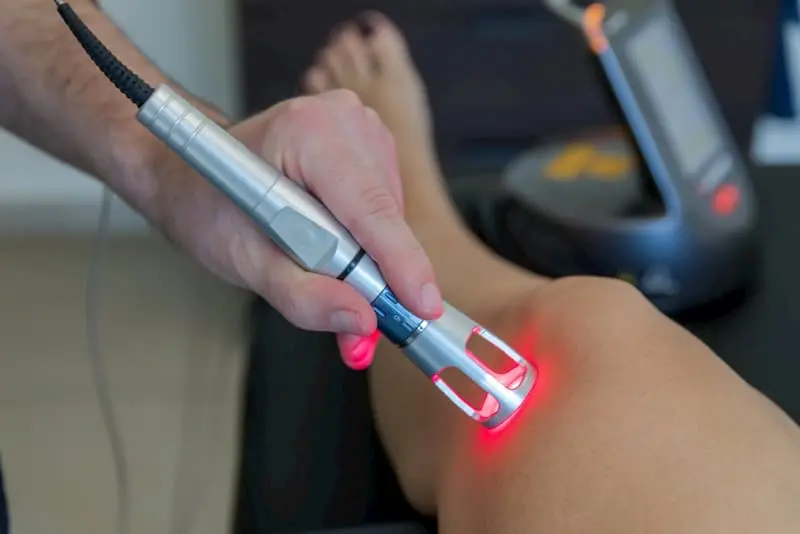
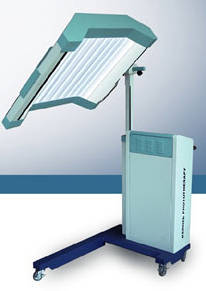

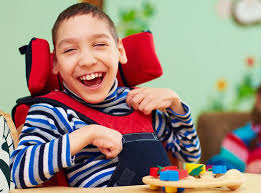
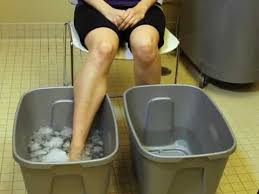
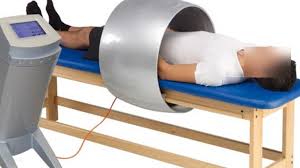
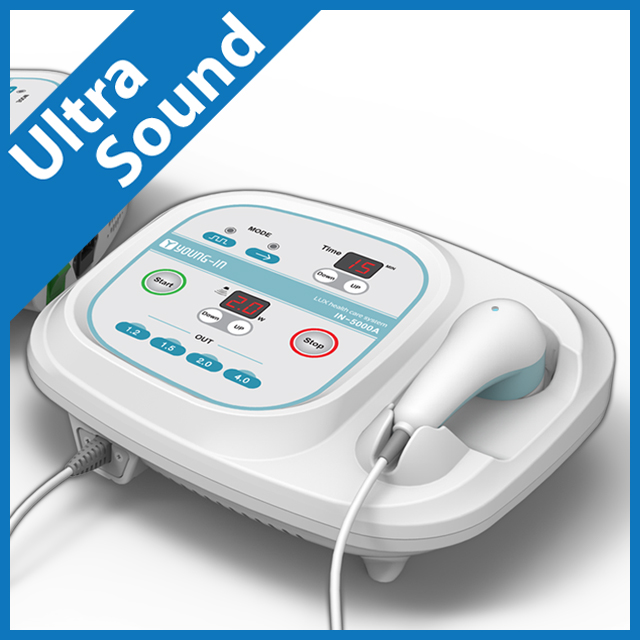
One Comment